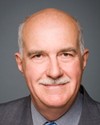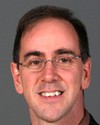The issue of a similar match is really to deal with cases where it can't be excluded on the first time through. In other words, I believe in the data bank there are 13 loci kept in their convicted offenders index. Sometimes they get crime scene profiles from police agencies, either in Canada or abroad, that use a different system, and they have nine or seven loci.
The problem there is that they match up to a certain point, and then they'll continue on. The data bank would then have several matches at what they call a moderate stringency, which says that these are close and there are these further matches--we match up to this point, but beyond this there are other DNA profile loci that we have, which could be those. They could give those profiles abroad and ask for further analysis to see whether or not it can be narrowed down to this list, so that they can further go back and get the identification information and determine whether they have a real match or not.
The whole purpose is to determine whether or not we have an exact match. Once you get to the point where it's scientifically proven that the person doesn't match, no other information can go ahead. If you get to the point where you have a degraded DNA sample from a crime scene that has limited DNA profiles, it's possible that it matches a number of convicted offender profiles, and the data bank can report up to that point that it has those matches. That's as far as it can go. But as soon as it's excluded, no other information can be given, even though it might be very apparent to the people doing the analysis that there are enough similarities in the DNA profiles that they have to conclude this is probably a relative of that person, which is familial searching. That familial searching report cannot be given. All they can do is report that they have a match or not, until they can get it down to a scientific certainty that there's enough loci in common to not exclude--in other words, if the DNA profiles in the data bank are largely the gold standard, but at the crime scene they're less than that, then up to a certain point you can say yes, we match to this point, but we match four, five, or six convicted offenders, because the completeness of the DNA profile from the crime scene isn't there. It allows them to do further research into narrowing down the possibility that the crime scene matches a convicted offender. If it doesn't, then that's excluded. But it could be in the process, as I said, of knowing that these different loci are close enough that the inheritance would suggest that the loci that are in common, but different, suggest a close relative.




